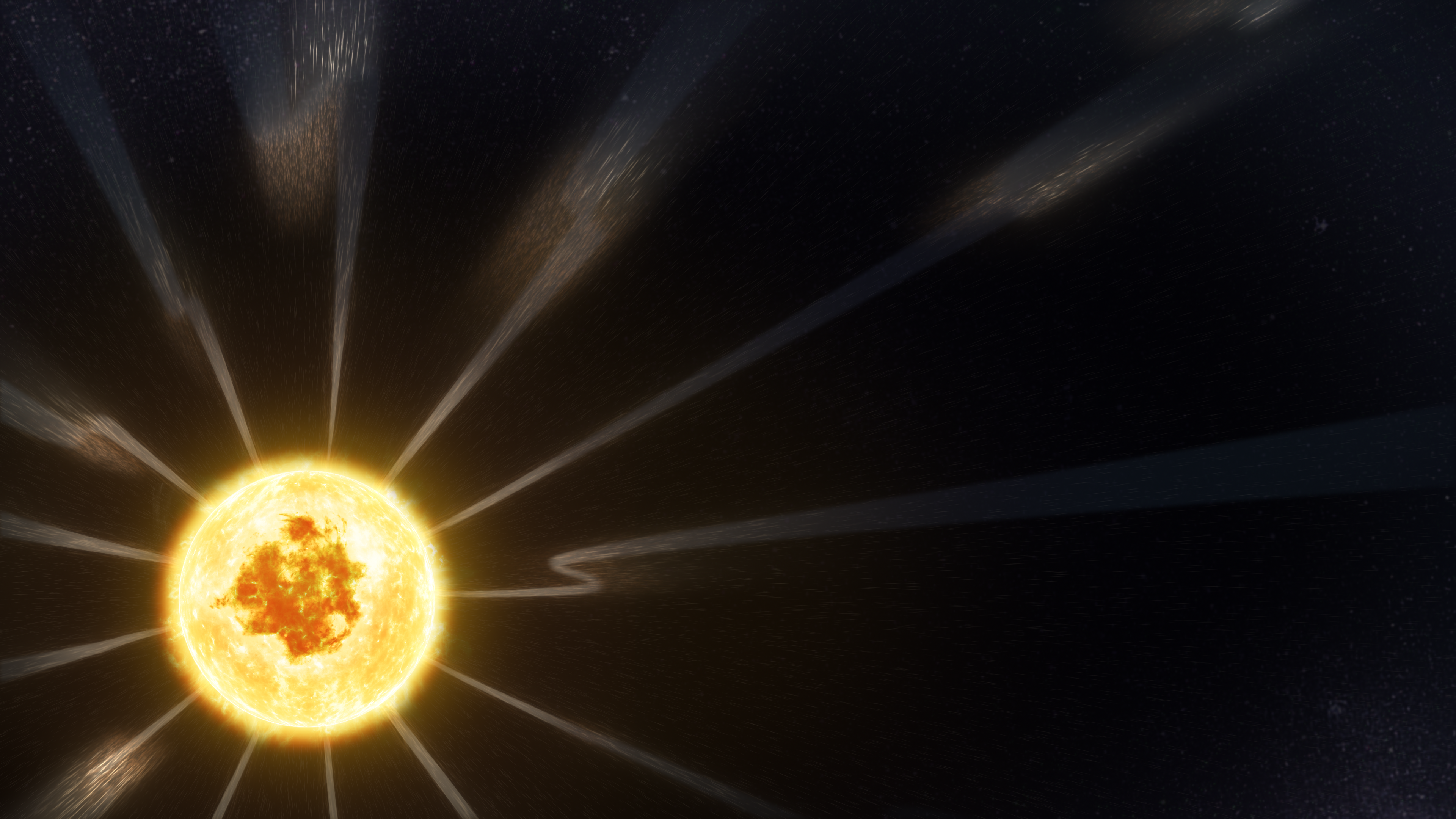Smithsonian Scientists Help Uncover How Solar Wind Gets Its Energy

Solar wind flowing from the Sun measured by Parker Solar Probe near the edge of the corona and later with Solar Orbiter at a larger distance during a spacecraft alignment. The solar wind contains magnetic switchbacks, or large amplitude magnetic waves, near Parker Solar Probe that disappear farther from the Sun where Solar Orbiter is located.
Credits: Image background: NASA Goddard/CIL/Adriana Manrique Gutierrez, Spacecraft images: NASA/ESA
Since the 1960s, astronomers have wondered how the sun’s supersonic “solar wind,” a stream of energetic particles that flows out into the solar system and extends beyond the orbit of Pluto, continues to receive energy once it leaves the sun. Now, thanks to the serendipitous alignment of two spacecraft currently in space studying the sun, Smithsonian scientists may have discovered the answer.
A paper in the journal Science, led by researchers at the Smithsonian Astrophysical Observatory, which is part of Center for Astrophysics | Harvard & Smithsonian (CfA), provides conclusive evidence that the fastest solar winds are powered by magnetic “switchbacks,” or large kinks in the sun’s magnetic field, near the sun.
“Our study addresses a huge open question about where the solar wind gets its energy and helps us understand how the sun affects its environment and, ultimately, the Earth,” said Yeimy Rivera of the CfA who co-led the study. “Further, if this process happens in our local star, it’s likely that this phenomenon powers winds from other stars across the Milky Way galaxy and beyond, and this could have implications for the habitability of planets outside our solar system.”
Previously, NASA’s Parker Solar Probe found that these switchbacks were common throughout the solar wind. When Parker became the first craft to enter the sun’s magnetic atmosphere in 2021, scientists observed switchbacks become more distinct and more powerful as the probe approached the atmosphere’s outer edge. Up to now, however, scientists lacked experimental evidence that switchbacks contribute a significant amount of energy to the solar wind.
“About three years ago, I was giving a talk about how fascinating these waves are,” said co-author Mike Stevens, also at the CfA. “At the end, an astronomy professor stood up and said, ‘that's neat, but do they actually matter?’”
To answer this, the team used two different spacecraft: Parker, which was built to fly through the sun’s atmosphere, or “corona,” and the European Space Agency’s Solar Orbiter mission, which is also on an orbit that takes it relatively near the sun. By coincidence, these two probes aligned in space relative to the sun in February 2022, and both probes were able to measure the same solar wind stream within two days of each other. Parker, which was skirting the edge of the sun’s magnetic atmosphere, observed slower plasma near the sun, which was full of switchback waves. The Solar Orbiter, which was farther out—about halfway to the sun from the Earth—recorded a hotter, fast stream featuring little wave activity. The data showed that the switchbacks near the sun provide enough energy to account for the heating and acceleration documented in the faster stream of the solar wind as it flows away from the sun.
“We didn’t initially realize that Parker and Solar Orbiter were measuring the same thing at all,” said Samuel Badman of the CfA, the other co-lead of the study. “When we connected the two, that was a real eureka moment.”
This knowledge is a crucial piece of the puzzle that will help scientists better forecast solar activity between the sun and Earth as well as understand how sun-like stars and stellar winds operate everywhere.
“It took over half-a-century to confirm that acceleration and heating fed by switchbacks are important processes, and they happen in approximately the way we think they do,” said John Belcher, emeritus professor from the Massachusetts Institute of Technology, who was not involved in this study. “This will be a classic paper, and it helps fulfill one of the main goals of the Parker Solar Probe.”
The paper describing these results is available on the journal’s website.
About the Center for Astrophysics | Harvard & Smithsonian
The Center for Astrophysics | Harvard & Smithsonian is a collaboration between Harvard and the Smithsonian designed to ask—and ultimately answer—humanity’s greatest unresolved questions about the nature of the universe. The Center for Astrophysics is headquartered in Cambridge, Massachusetts, with research facilities across the U.S. and around the world.
# # #
SI-271-2024
Megan Watzke
617-496-7998
mwatzke@cfa.harvard.edu
Benjamin Marcus
202-633-5194
marcusba@si.edu
